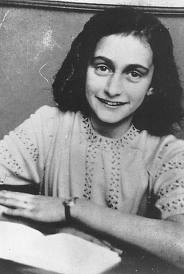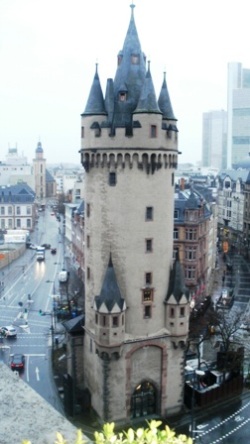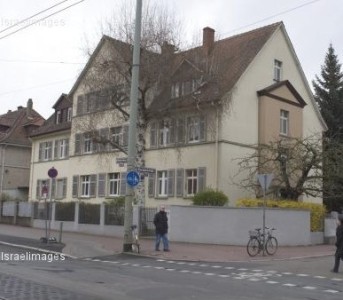Editor’s note: This article is the second of of a two part series by Lionel Steiman a Senior Scholar of the Department of History at the University of Manitoba. This article arises out of a conference entitled “Languages and Cultures of Conflicts and Atrocities.” The conference was an international and interdisciplinary conference held at the University of Manitoba and the Inn at the Forks, October 11 through 13, 2012. Sponsored by the University of Manitoba, the conference covered a range of topics of interest primarily to scholars, but two of the keynote addresses were of more general interest, and these were free and open to the public.]
TRANSLATING ATROCITY: THE PROBLEMS WITH VISITING ANNE FRANK’S SECRET ANNEX ON-LINE ? CAN A VIRTUAL EXPERIENCE CAPTURE REALITY?
by Dr. Lionel Steiman, November 22, 2012
 The first keynote address of the “Languages and Cultures of Conflicts and Atrocities.” I attended, titled “Translating Atrocity: The Materiality of Virtual Sites of Experience”, was by Professor Alison Landsberg, of George Mason University. Dr. Landsberg spoke about how to communicate experiences so horrific that they defy all description or expression. In addition to being removed from us in time, place, language and culture, the essential elements of such realities are their extreme, unbearable, physical and emotional pain. Landsberg insisted that any inquiry into how this might be attempted must begin from the premise that it is impossible to ever fully capture another’s experience. Following this disclaimer she focussed on recent technologies that enable on-line exhibits to offer the inter-active player “virtual experiences” that approximate lived realities more closely than traditional texts. Such technologies enable users to feel emotions generated by events far removed from their own lives, events of which they cannot possibly have had actual experience.
The first keynote address of the “Languages and Cultures of Conflicts and Atrocities.” I attended, titled “Translating Atrocity: The Materiality of Virtual Sites of Experience”, was by Professor Alison Landsberg, of George Mason University. Dr. Landsberg spoke about how to communicate experiences so horrific that they defy all description or expression. In addition to being removed from us in time, place, language and culture, the essential elements of such realities are their extreme, unbearable, physical and emotional pain. Landsberg insisted that any inquiry into how this might be attempted must begin from the premise that it is impossible to ever fully capture another’s experience. Following this disclaimer she focussed on recent technologies that enable on-line exhibits to offer the inter-active player “virtual experiences” that approximate lived realities more closely than traditional texts. Such technologies enable users to feel emotions generated by events far removed from their own lives, events of which they cannot possibly have had actual experience.
Landsberg insisted that there is a moral and political imperative to try to understand the nature and effects of distant atrocities – in order, presumably, to prevent their recurrence. But she more interested in explaining than justifying the replication of the experience of atrocity, which she conceived as a project of translation. Such translation would inevitably be partial, approximate, incomplete, and imperfect. It s aim must be the communication of textures, colours and other elements of ambience and affect from one medium to another, from one subject to a subject far removed in time, space, and culture. Dr. Landsberg showed great sensitivity to potential difficulties in this project, but her approach seemed so qualified as to raise doubts about its prospects for success.
Toexplore this process of “translation”, Landsberg walked her audience through a website called “The Secret Annex Online”, which offers a virtual visit to the hiding place of Anne Frank. But the “annex” was not so much the site of atrocity as thesite of its prequel, since nothing particularly atrocious happened in the annex prior to its occupants’ deportation. Nonetheless Professor Landsberg went on, explaining how this site of “virtual atrocity” is at once material and artificial, as it “translates” Anne’s experience from herself to the museum site and thence to the visitor-viewer. She indicated the various ways in which viewers can experience Anne’s life in the annex by clicking on icons or links that permit them to enter the various areas of the annex- the book-case that swings open to reveal the door to the annex, its rooms, the stairways, corridors, walls, furniture, and so on. Various aural and other cues translate visual experience into an embodied, lived experience.
Landsberg conceded that such experience is illusionary, and that an unmediated experience of reality is impossible. Each viewer’s visit to the annex will be different from that of other viewers depending background knowledge, interest and degree of emotional involvement, all of which would affect their receptivity to any “spark” in the exhibit that might trigger the translation of the foreign into the familiar. Landsberg emphasized the ways such a “virtual tour” fell short of reality and even misled visitors, but she clearly believed that authentic sites could ensure visitors a meaningful experience.
 Not everyone in the audience was convinced. Some asked technical questions about the process and its objectives, but others pointed to some fundamental limitations of this or any other online exhibit dealing with “atrocity.” One person stated pointedly that unlike the occupants of the real-life annex, visitors to its online counterpart remain in total control of their tour-they can include or omit whichever areas of the site they choose. Some would complete their tour without knowing Anne’s ultimate fate. And even if they did watch the video outlining the events leading from betrayal and discovery to deportation and death, they would still get only the barest outline. Other videos focus on material clearly felt to be of greater importance: the subsequent lives of the surviving occupants of the Annex, and the recovery and publication of Anne’s diary.
Not everyone in the audience was convinced. Some asked technical questions about the process and its objectives, but others pointed to some fundamental limitations of this or any other online exhibit dealing with “atrocity.” One person stated pointedly that unlike the occupants of the real-life annex, visitors to its online counterpart remain in total control of their tour-they can include or omit whichever areas of the site they choose. Some would complete their tour without knowing Anne’s ultimate fate. And even if they did watch the video outlining the events leading from betrayal and discovery to deportation and death, they would still get only the barest outline. Other videos focus on material clearly felt to be of greater importance: the subsequent lives of the surviving occupants of the Annex, and the recovery and publication of Anne’s diary.
“The Secret Annex Online” is about the details of Anne Frank’s life in hiding, not her deportation and the circumstances of her death. There is nothing in this on-line exhibit that really connects Anne’s life in the Annex with the Holocaust. The same sort of exhibit could be created about anyone anywhere confined against their will and forced to endure discomfort and privation. Visitors to “The Secret Annex Online” might experience a sense of confinement or boredom, but nothing really atrocious or remotely akin to what Anne and her family must have suffered in their deportation and dying, a fate to which millions of others were consigned without prior secret confinement.
Both Professor Landsberg and members of her audience remarked on the voice of the narrator in “The Secret Annex Online”, which conveyed an impression of concern and compassion, distanced by tone and accent. Landsberg thought the voice “European accented” while her audience recognized it as British. In any case, it created a distance which insulated the viewer from any “real” experience of the video’s content. Online exhibits may be more technologically sophisticated, but they also commit slights similar to those of cruder documentaries: rather than creating connections to “actual” space and lives they erase or edit such connections for the sake of marketability, user-friendliness, and teaching.
The narration in “The Secret Annex Online” follows prevailing American practice in normally referring to “Nazis” rather than “Germans”, a usage which allows viewers to forget where most Nazis are from, which those in the annex never did. The point is not to denigrate German people or culture but to be historically accurate, and to give a political pathology its proper geographical, cultural, and historical location. The video recounting the liberation of Auschwitz calls the liberators “Russian” when to be consistent it should have called them Communist or more accurately Soviet. Deliberate or not, this sort of selective terminology accommodates viewer prejudice and reinforces a simple view of the world as divided between villains and victims.
 The exhibit’s reluctance to forefront complexity is evident again in the section about the children’s growth chart -the voiceover’s happy tone of celebration is enhanced by video images of photographs: a close-up of a smiling Anne; and a beach scene of Anne with her sister. Some visitors may identify with the girls enjoying themselves: their imprisonment is thus normalized, the “good times” persisting untouched by the reality of their imprisonment and subsequent fate. But for visitors who know of that fate or who go on to view the video outlining it, the growth-chart and cheery photos can become poignant signifiers. The extent to which elements of the exhibit are de-contextualized will vary with visitor preparation and degree of engagement with the material.
The exhibit’s reluctance to forefront complexity is evident again in the section about the children’s growth chart -the voiceover’s happy tone of celebration is enhanced by video images of photographs: a close-up of a smiling Anne; and a beach scene of Anne with her sister. Some visitors may identify with the girls enjoying themselves: their imprisonment is thus normalized, the “good times” persisting untouched by the reality of their imprisonment and subsequent fate. But for visitors who know of that fate or who go on to view the video outlining it, the growth-chart and cheery photos can become poignant signifiers. The extent to which elements of the exhibit are de-contextualized will vary with visitor preparation and degree of engagement with the material.
Professor Landsberg left many in her audience feeling that the experience offered by online exhibits such as the Secret Annex was no substitute for other more traditional accounts. More importantly, the comments of some audience members implicitly disqualified this exhibit from inclusion in the conference roster: had Anne and her family survived and gone on to lead ordinary lives, it could still have been used to illustrate their annex experience, in itself unpleasant enough but with little to interest scholars of atrocity.









